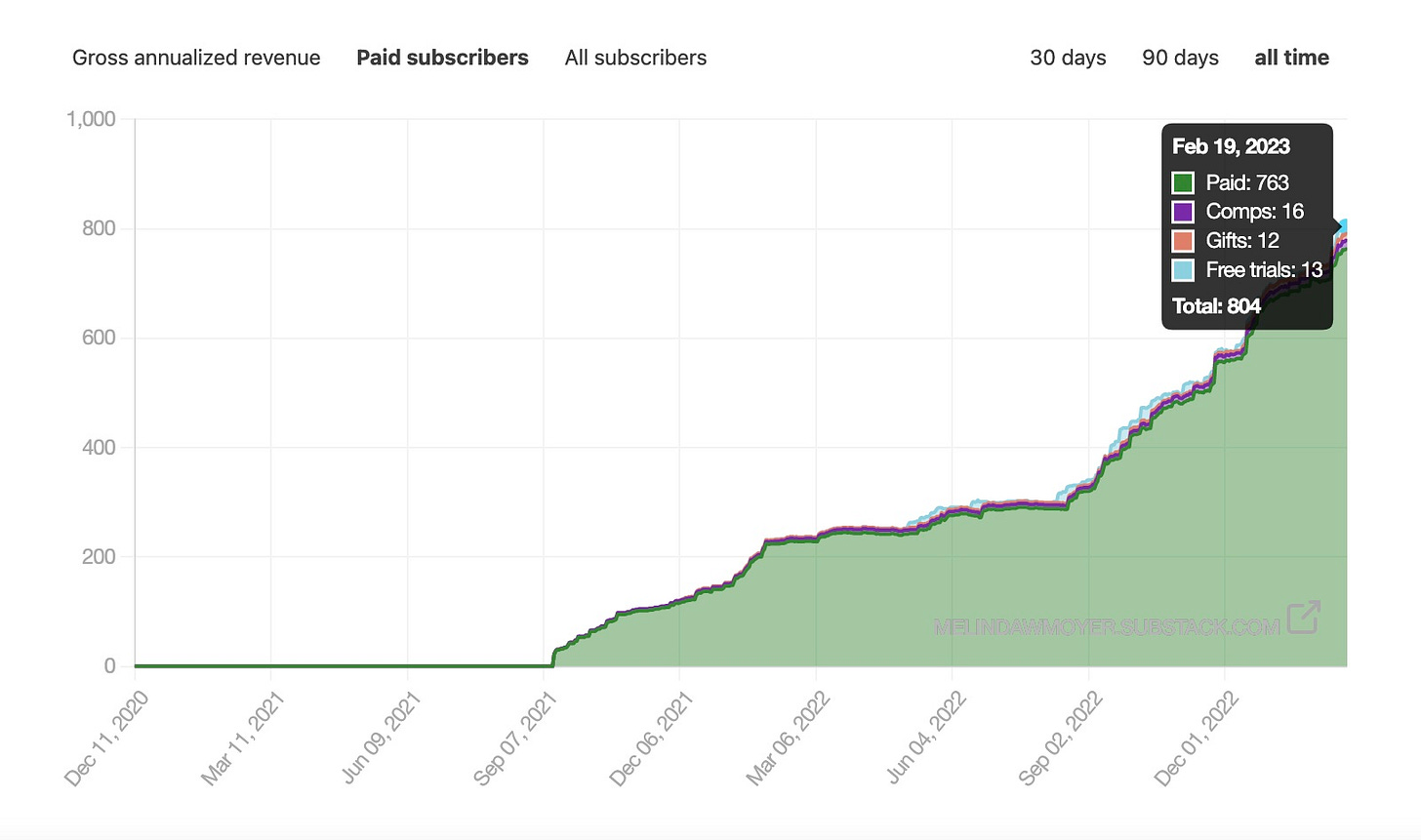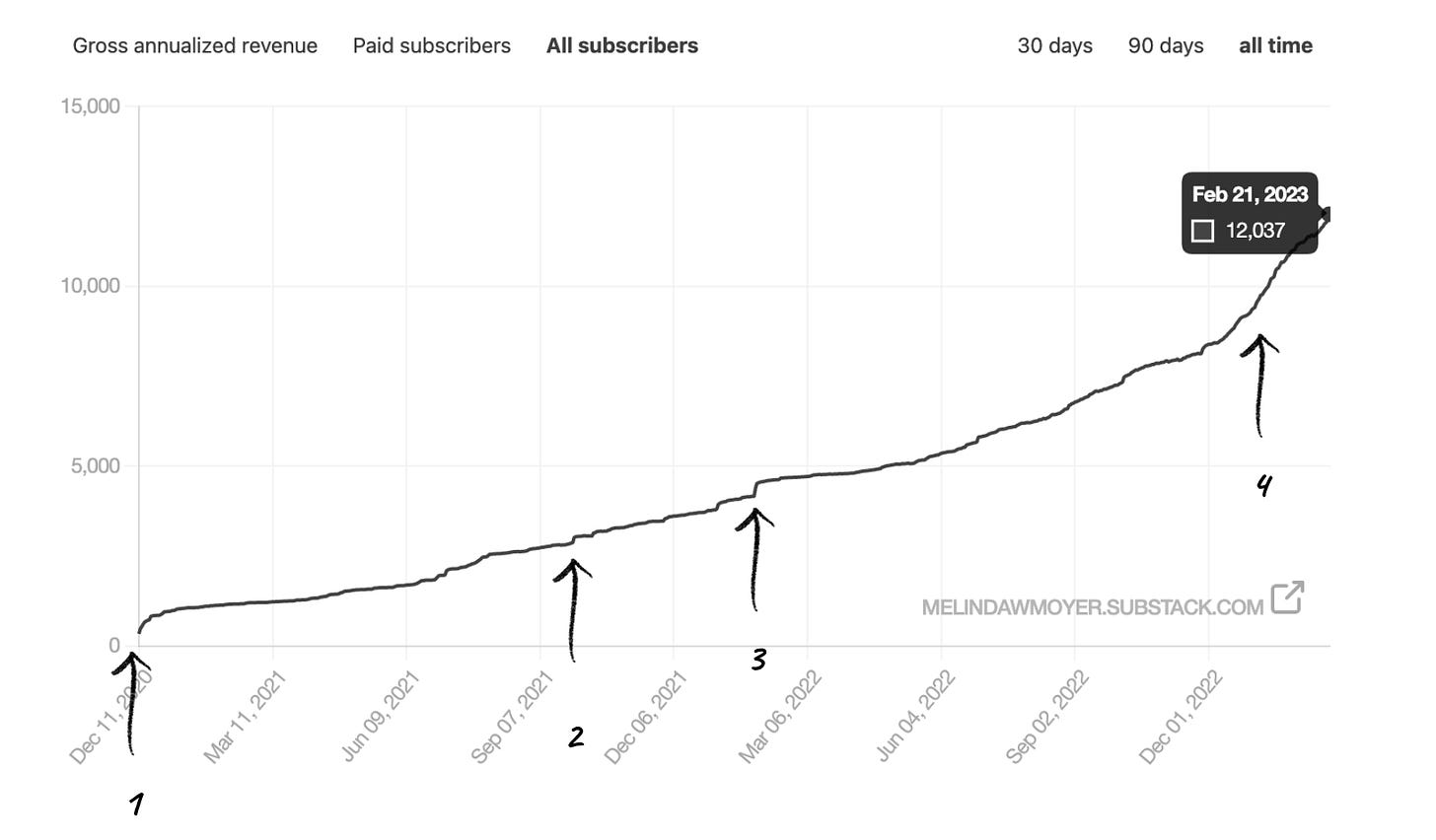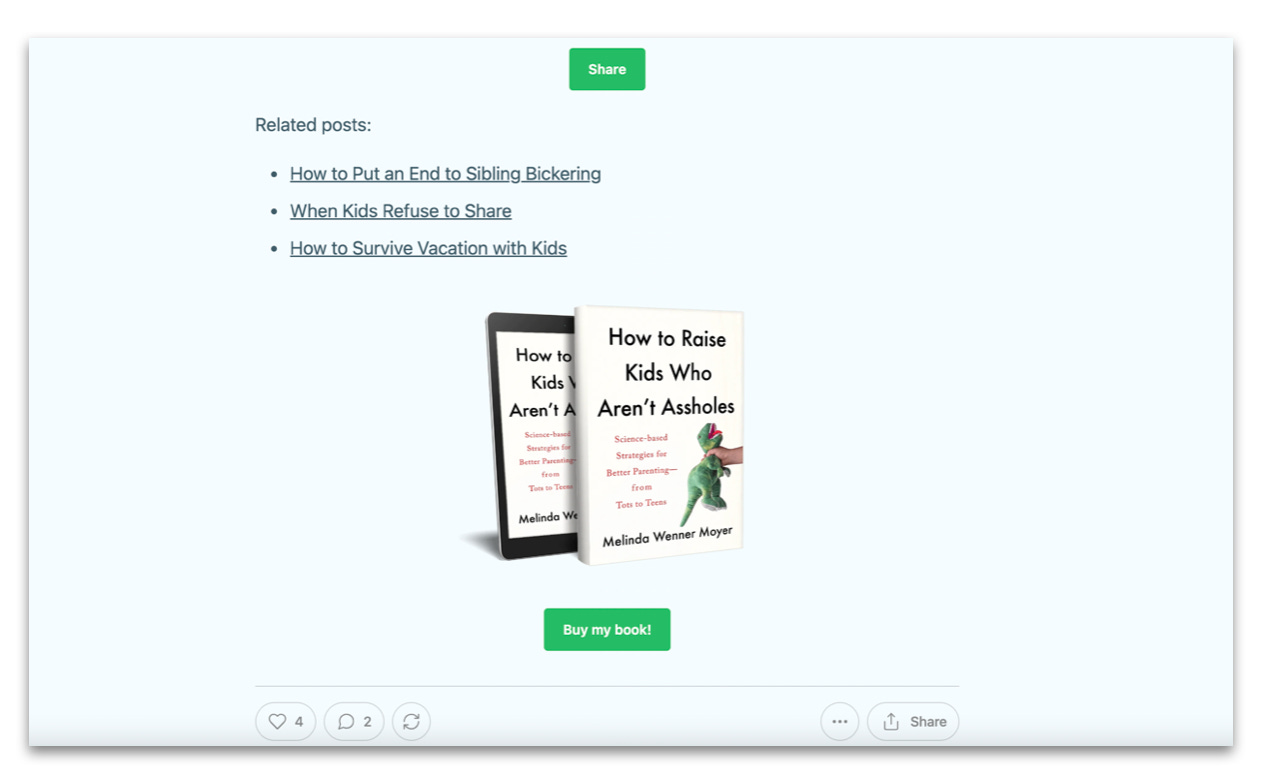The Grow interview series is designed to share the nuts and bolts of how writers have gone independent and grown their audiences on Substack. It has been lightly edited for length and clarity.
We invited
, who writes to share insights into selling your book on Substack, making the most of Substack’s recommendations network, and making her newsletter a full-time business.Before starting her Substack, Melinda was an award-winning freelance science journalist of 14 years and had just written a book, How to Raise Kids Who Aren’t Assholes (published by Putnam Books in 2021). With the book recently going into its second printing, Melinda’s editor credits her Substack for its success.
Alongside her Substack, Melinda writes for the New York Times, as well as contributing to Scientific American, The Atlantic, and other publications.

What’s your Substack about in one sentence?
I use science to answer timely parenting questions and debunk bad parenting advice.
Who reads your Substack?
Parents—mostly mothers, but some fathers too.
What do you uniquely offer readers?
A lot of parenting advice today is inaccurate and makes parents feel terrible—that they’re doing things wrong or aren’t doing enough. My newsletter is an antidote to that.
I have a bachelor’s degree in molecular biology and a master’s in science journalism, so I often start with a challenging parenting question, then I hunt through the research literature for studies that could help answer it. I carefully read them, and occasionally also interview the authors to make sure I understand the nuances. Then I boil down the essentials for my readers and provide guidance based on what the science says.
I often find the advice parents encounter on social media—and the parenting “wisdom” passed down through generations—doesn’t work. It doesn’t make parents’ lives easier and actually makes them harder (and causes parents to feel a lot of shame, too). Many parenting recommendations are based on inaccurate interpretations of the research. Some are rooted in harmful sexist stereotypes. Others are fueled by unnecessary fear. I shed light on which pieces of advice parents can trust and which they should ditch, and I share new themes emerging from the research that could impact parents’ choices and priorities.
What’s your content strategy?
Schedule: I publish three times a week: a free newsletter on Tuesdays, a thread for paid subscribers on Thursdays, and a paid newsletter on Fridays.
Format: Most of my newsletters are essays or a mixture of essays and guidance. Some are tied to current events, like “How do I talk to my kids about the Uvalde massacre?” Others unpack and address new or ongoing controversies in the parenting world over disciplinary strategies or recommendations. I also share science-based guidance to help parents find balance in their lives, support their mental health, and communicate with their partners, and I run Q&As with researchers and thought leaders.
Paid content: I recently launched a new feature: “Parenting Advice Hot-Takes,” in which I share my thoughts on parenting advice that has recently gone viral. This appears behind a paywall at the end of each free newsletter. I was inspired to launch this feature after reading
’s Grow interview, where she explained that she paywalls content in every newsletter.
Read more: How to Talk to Kids About Mass Shootings
Growth by the numbers
Started Substack: December 2020
Turned on paid subscriptions: September 2021
Total subscribers: 12,000
Paid subscribers: 800
Meaningful growth moments
Pre-launch: I had just finished writing my book, How to Raise Kids Who Aren’t Assholes, and was brainstorming ways to build my audience. I knew that newsletters were an effective way to market and sell books, so starting a Substack seemed like a no-brainer.
Writer recommendation boost: On Instagram, psychologist
discussed and recommended a newsletter I wrote about homework.Another shoutout: Author Ryan Holiday recommended my book and newsletter in his “Reading List” newsletter.
A key ongoing recommendation:
, ’s Substack, began recommending my newsletter.
I had just finished writing my book and was brainstorming ways to build my audience. I knew that newsletters were an effective way to market and sell books, so starting a Substack seemed like a no-brainer.
How did you decide to go full-time writing your Substack?
For the first 18 months, my newsletter was more of a side gig for me both mentally and financially. I invested a lot of time in it, but I didn’t stick to a regular schedule and my posts weren’t always rigorously reported. In August 2022, I decided to make the newsletter a priority, and especially my paid content. I knew of writers who were making a good salary from their Substacks, and I craved more financial stability, given the rapidly dwindling media landscape. I very quickly saw a return on my investment and have since tripled my paid subscriptions. Is My Kid the Asshole? has morphed into “Wow, I’m actually earning some money here” territory.
Why did you choose to go paid?
It’s hard to make a living as a freelance journalist today—and that’s especially true in parenting journalism. Society undervalues parenting in large part because it’s still considered “women’s work” (this is changing, but not quickly enough). As a result, very few parenting-focused publications can pay a living wage. Going paid on Substack offered me the opportunity to keep covering crucial parenting issues while also earning a stable income.
Read more: Why Is Branding So Effing Hard?
You recently tweeted that your publisher credits Substack for continued book sales. Can you tell us more?

A few months ago, my editor, Michelle Howry at Putnam Books, told me that my paperback was going into a second printing. I was thrilled! My book was first published in July 2021, and it continues to sell steadily every week. Michelle credits my Substack for helping to drive continued sales. It’s sold just under 25,000 copies.
My book was first published in July 2021, and it continues to sell steadily every week. My editor credits my Substack for helping to drive continued sales. It’s sold just under 25,000 copies.
What made you decide to offer the book as a founding member–tier perk?
Since I know my subscribers are parents who want more guidance, I thought offering a signed copy of my book to founding members would make perfect sense. Even if they already had a copy, they could give the extra one to friends, which would build my audience even more.
What type of reminders do you have about your book?
In nearly all my free newsletters, I mention my book and link to a page on my website that includes purchase links. There’s usually a photo of the book somewhere in the post too. Every week, I see that readers click the links.
What are your plans for the future of Is My Kid the Asshole?
I’m planning to rename the newsletter in the next few months to more accurately reflect what it does. I no longer solely focus on challenging kid behavior. Much of what I write now challenges parenting norms and expectations, pushes back on bad parenting advice, or offers scripts and frameworks for talking to kids about difficult things. I have also set the goal of at least doubling—and ideally tripling—my paid subscriptions by the end of 2023, so I can dedicate even more time to the newsletter.
What is the sharpest piece of advice you can offer other writers about growing a Substack publication?
Share your newsletter regularly on social media. Support and engage with other Substack writers. Many of them will end up reading and recommending your Substack too.
Also, be a real person on Substack. Don’t be afraid to “break the rules” in terms of what you share or discuss. I’ve learned that my subscribers love when I open up about my personal life and my experiences as a parent. Earlier this winter, I sent out a paid newsletter with a free preview in which I admitted that I didn’t really have a proper newsletter to share because I’d just stabbed myself in the eye with scissors (don’t worry—it healed quickly). I got more comments, texts, and emails from subscribers that day than I ever have. Many said they were grateful to hear that I do stupid things too. When subscribers know you’re a real human being, they connect more closely with you and engage more with your writing.
When subscribers know you’re a real human being, they connect more closely with you and engage more with your writing.
What advice have you received about growing your publication that didn’t prove to be helpful?
I know that the best practice is to put your best content in free newsletters, and I agree with the rationale: the more free subscribers you have, the more your newsletter will get shared. But good paid content really makes a difference. Whenever I publish well-researched paid newsletters and I include free previews, I convert lots of free subscribers to paid.
What surprised you about writing on Substack?
I have been floored by how supportive and generous my subscribers are, both to me and to each other. There are no “mommy wars” breaking out in my subscriber threads—just support, reassurance, and lots of wisdom. It’s been wonderful to see the community grow and thrive.
Here’s an example: In January 2022, a story I wrote for The Atlantic about the impossibility of parenting during the pandemic went viral. I decided then to start hosting “Parent Scream” threads at specific times—open to free subscribers—so that my subscribers could vent about their pandemic situations and experiences. These became extremely popular, and I was blown away by how wonderfully supportive everyone was.
Another thing that has surprised me is that the more I write for Substack, the easier (and faster) the writing gets. Sometimes I can’t believe I’m writing thousands of words a week for my newsletter in addition to the other articles I report and write for mainstream publications.
Who’s another Substack writer you’ve turned to for guidance or inspiration?
. She’s a good friend and neighbor, and we often text about growth strategies. Her newsletter, —which is fabulous, by the way—has grown substantially over the past year, and I’m always watching what she’s doing and how she’s doing it.Takeaways
Support and engage with other Substack writers. When Melinda’s Substack was recommended by key writers in her subject matter, she saw instrumental growth.
Promote your book in each post. Melinda often links to research and data in her book and links again to the book at the bottom of posts, as well as offering a signed copy to founding-tier subscribers.
Show that you’re human. When Melinda shares her personal side, she gets more response than ever. It’s not the main subject of her newsletters, but it’s also something she’s not afraid of doing.
What questions do you have for Melinda that we didn’t ask? Leave them in the comments!
To read more from this series on growing your publication, see our interviews with Leslie Stephens, Becky Malinsky, Tim Casperson, Marlee Grace, Gergely Orosz, Anne Kadet, Category Pirates, BowTiedBull, Justin Gage, Noah Smith, Carissa Potter, Jørgen Veisdal, Anne Byrn, Nishant Jain, Michael Fritzell, Glenn Loury, Erik Hoel, Jessica DeFino, Mike Sowden, Elizabeth Held, Jonathan Nunn, Polina Pompliano, Michael Williams, Judd Legum, and Caroline Chambers.
If you’re inspired Melinda and want to start your own Substack, you can get started here:














Share this post